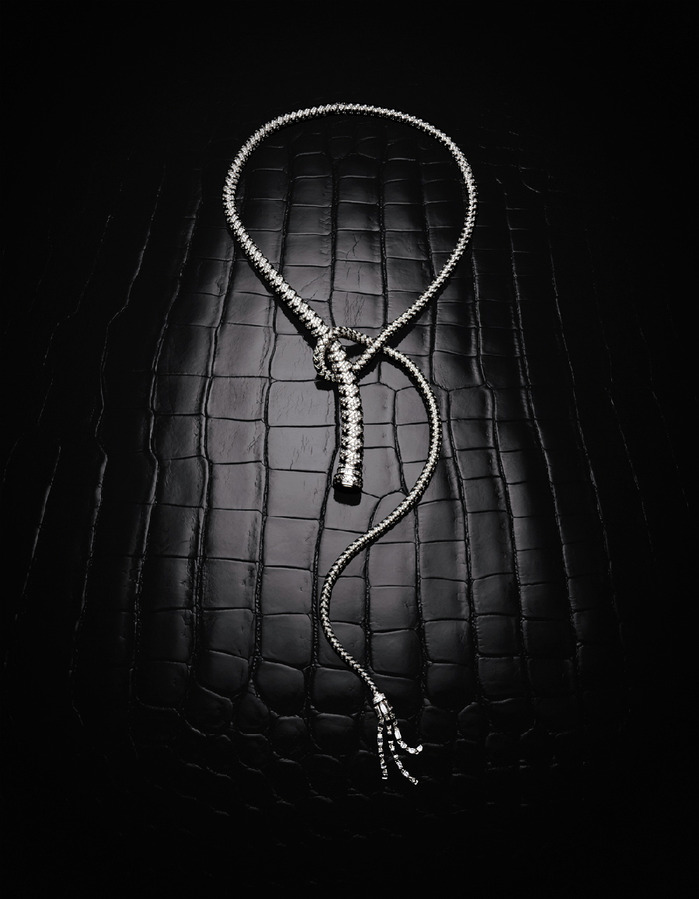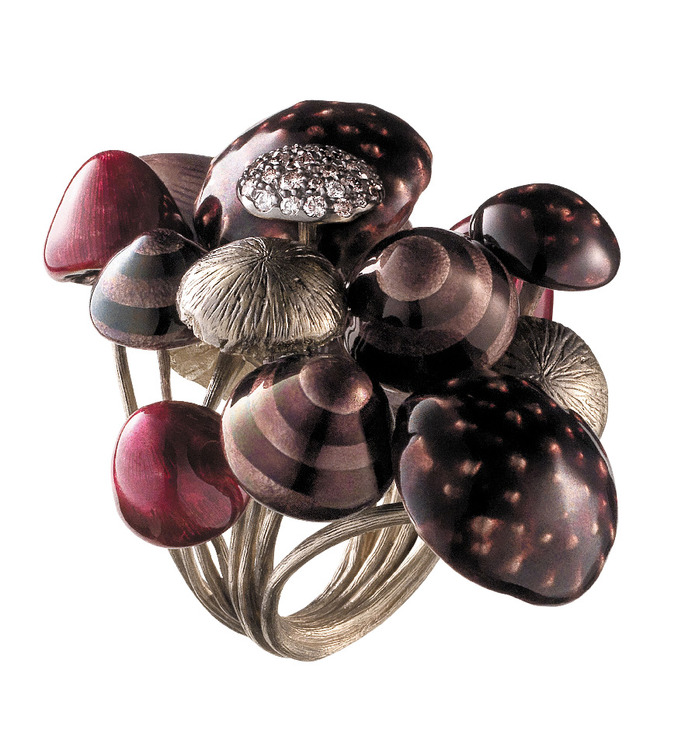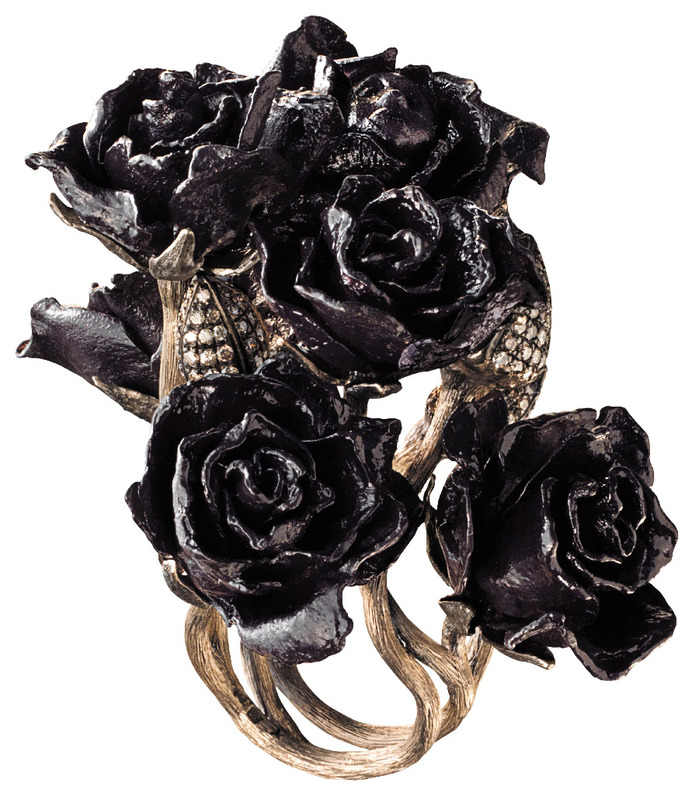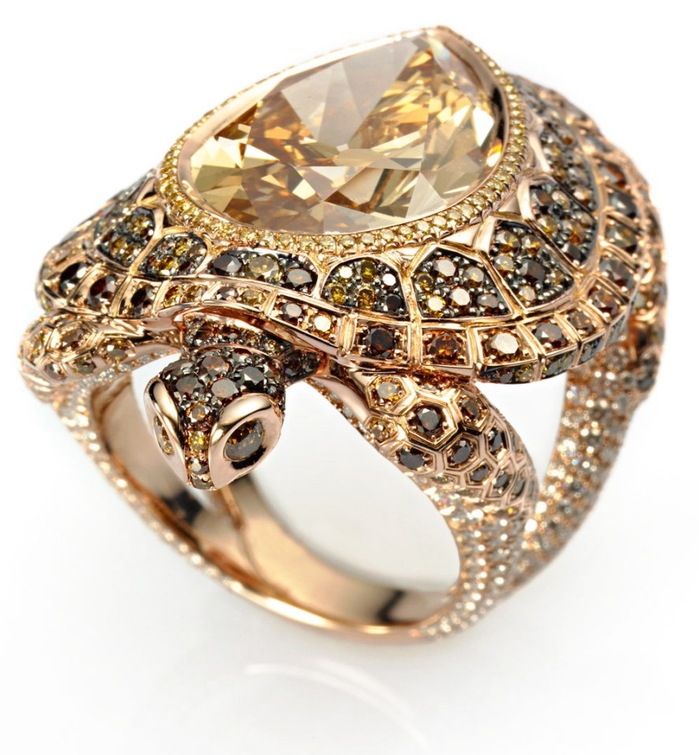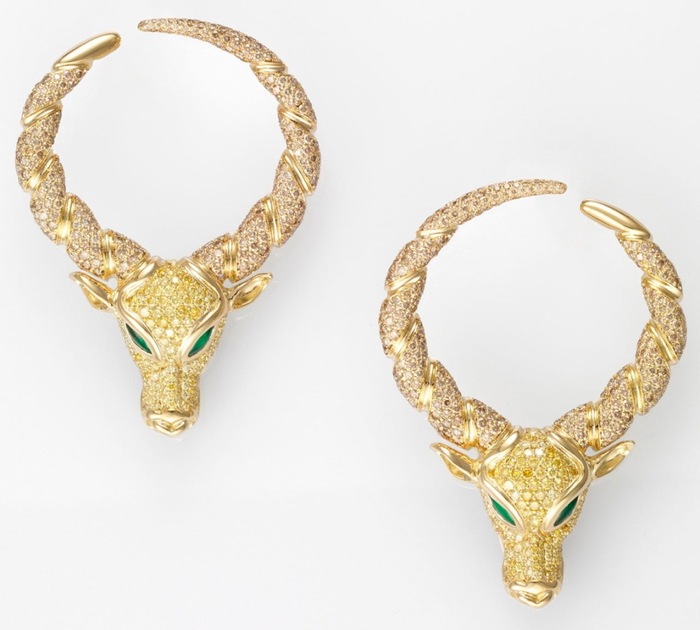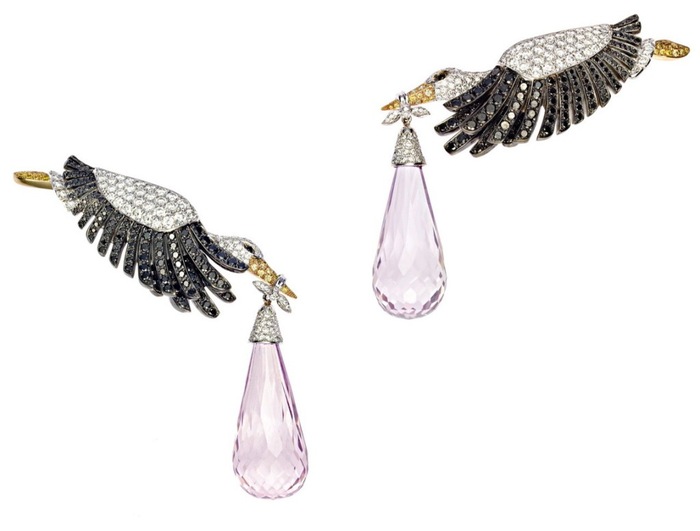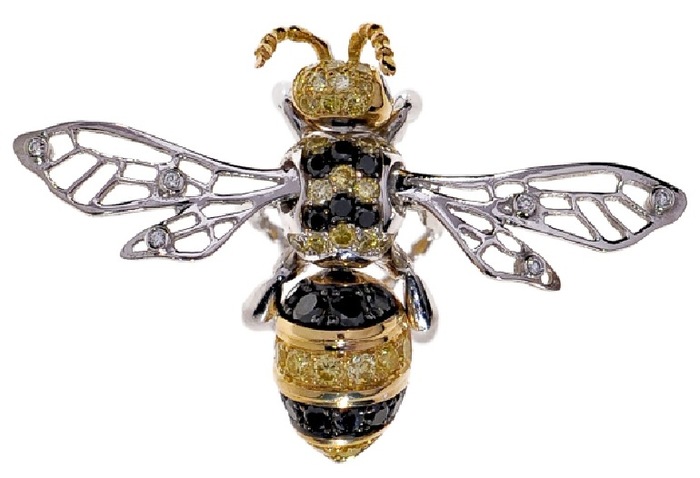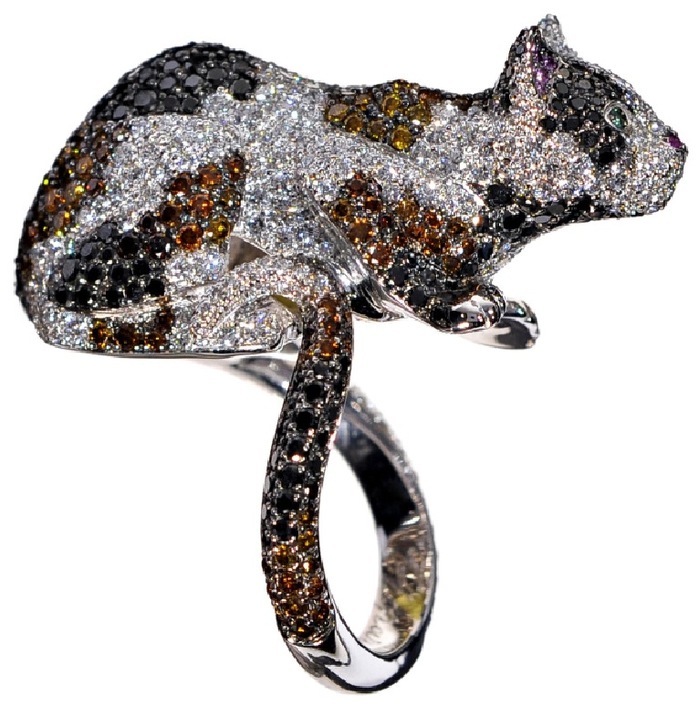April 2010 Archives
As promised in the previous entries on Adler, I have some pictures of their recent experiments in Titanium. Although relatively common on Earth, Titanium was only purified and used in bulk in the second half of the 20th century. It is commonly used in watches, but rarely in jewelry. One of the aspects of it that Adler leverages is the ability to anodize the normally gray metal to a rainbow of colors. All pictures from Adler, unless noted
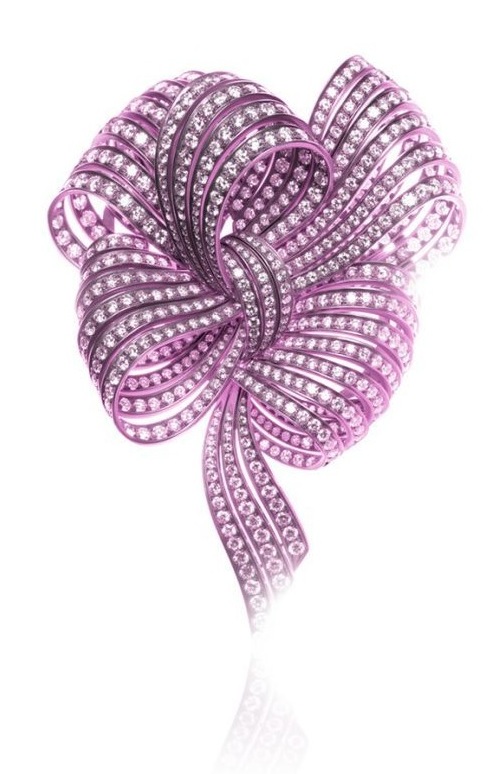
Fiocco broach, set 826 diamonds, totaling 38ct. Here the Titanium was probably chosen to produce the bright fuchsia color. Notice how the strips of the ribbon are constructed of separate strips of metal, similar to the sapphire ring.
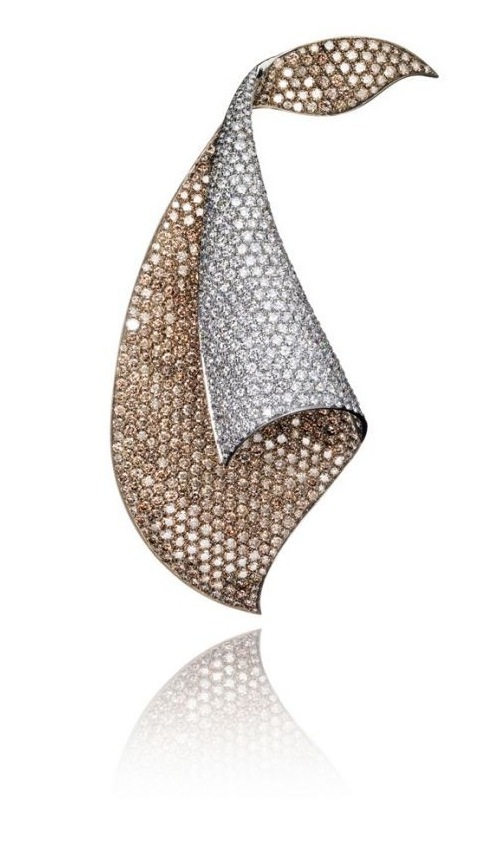
Autumn Leaf broach, set with 20ct of white and 40ct of brown diamonds. Here the lightness of the Titanium allow for a shape that would have been otherwise too weak to support itself
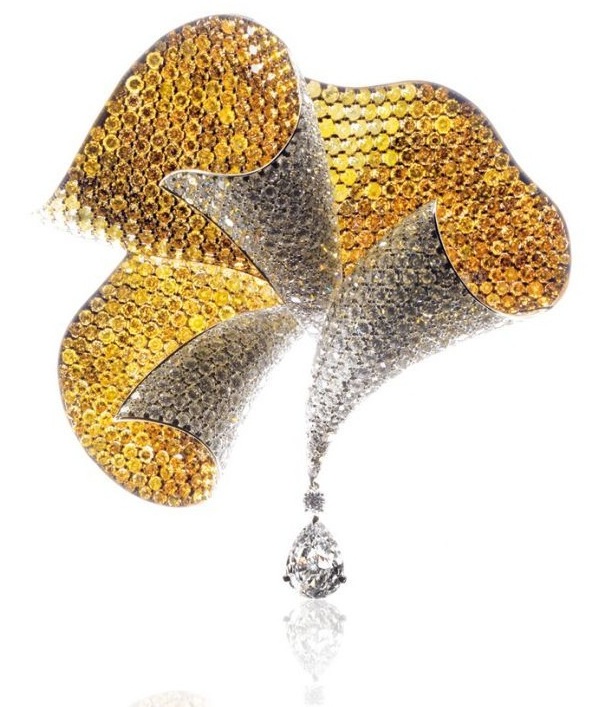
Ventaglio (Fan) broach, set with white and cognac diamonds, and a 5ct pear-shaped white diamond drop. The Titanium's strength permitted less structural metal than would have been needed with Gold or Platinum, allowing the diamonds to entirely obscure the structure.
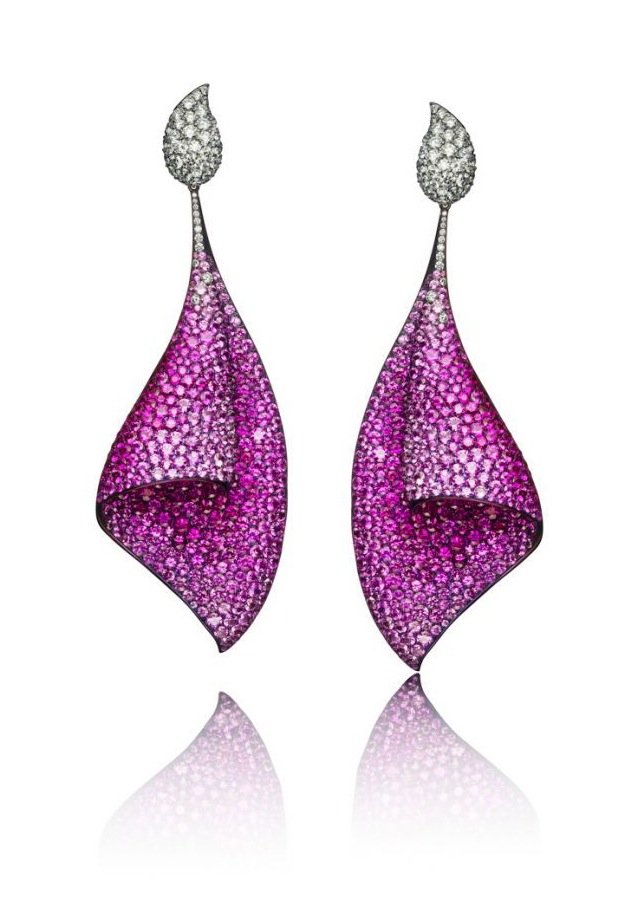
Sail earrings, set with 73ct of pink sapphires and 7ct of white diamonds. Here all of the properties of the metal are on display: it has been anodized to highlight the pink of the sapphires, no other metal could permit such a fine structure support the stones and no ear could support even that much Platinum or Gold without drooping to the floor.
Here you can see their size and a more accurate view of their color, worn by Georgina Robertson
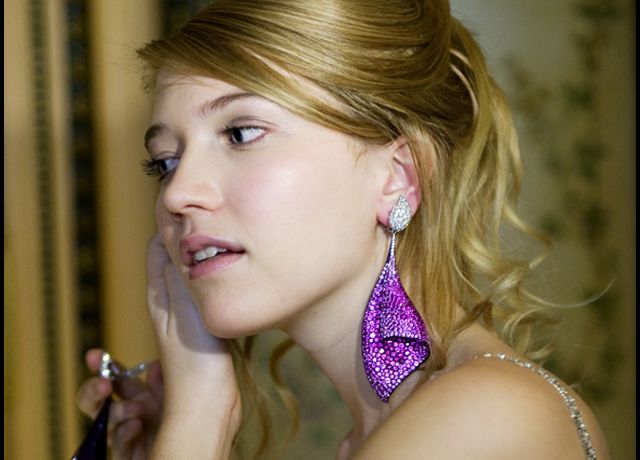
A
Focusing on a selection of rings for this post. Necklaces were previously featured, and there's an unusual collection of jewelry in Titanium, where the metal has been anodized to color as part of the design, still to come.
Unusual, but not actually attractive. The setting of a stone that large with only four prongs worries me, and I find the underside of the pedals, where the cutout structure from the casting is apparent, unimpressive
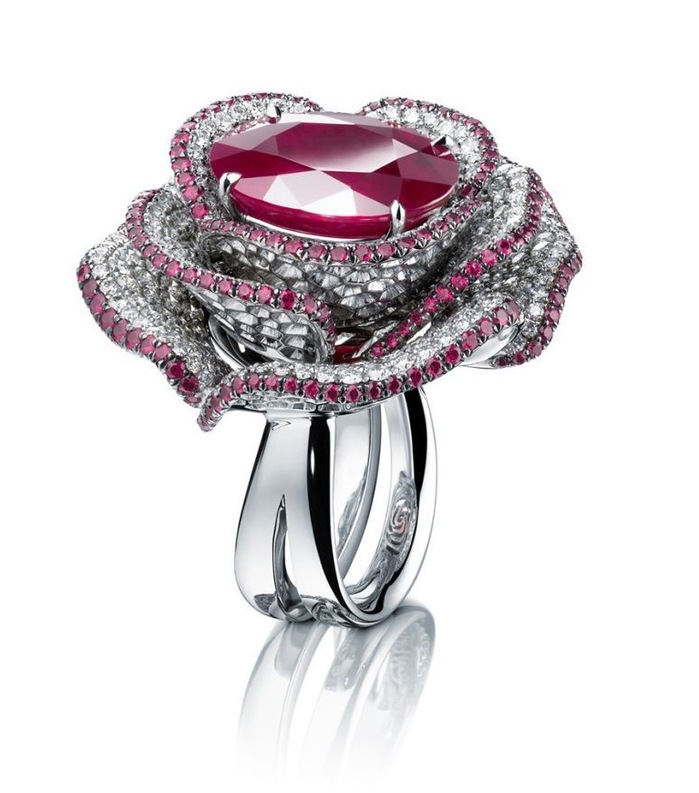 Purple Rose ring, set with a 10ct Burmese ruby
Purple Rose ring, set with a 10ct Burmese ruby
These next two are clearly to show off the primary stones which are, admittedly, impressive
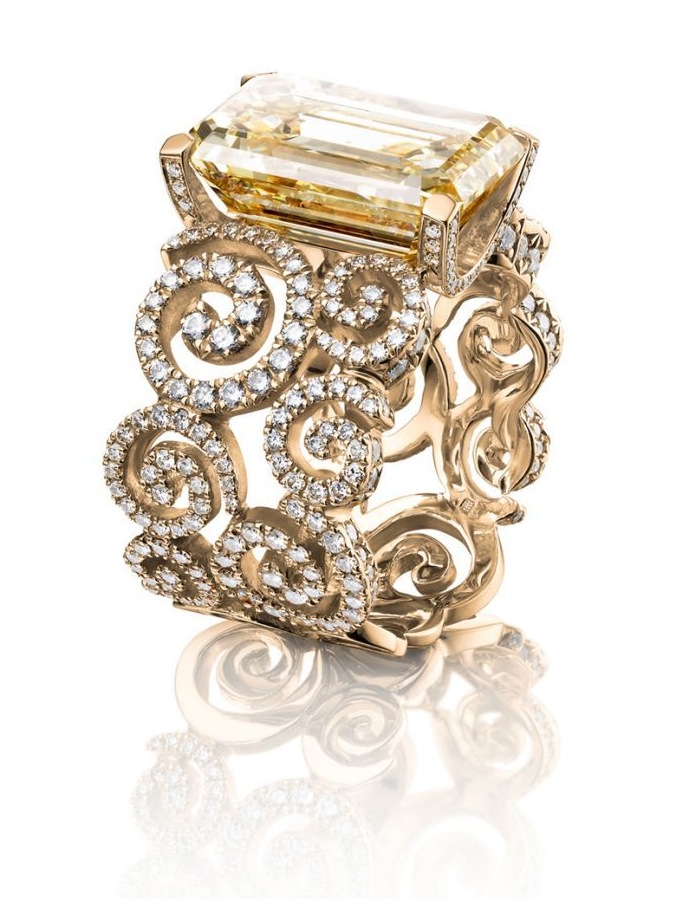
Pink Volute ring in 18kt pink gold supporting a 10ct yellow-brown diamond. The smaller stones are Top Wesselton diamonds, an archaic European term for F/G white stones, referring to a long-closed diamond mine.
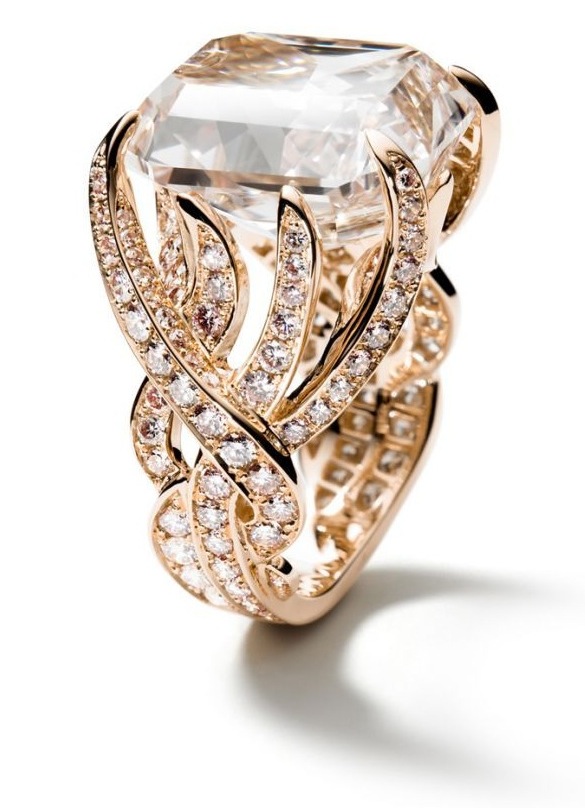
Catch Me ring in 18kt pink gold. The primary stone is a 20ct pink-brown monster
Finally an unusual piece, showcasing Adler's motif of multiple courses of stones, in this case a diamond border with tendrils of sapphire leading to the central stone.
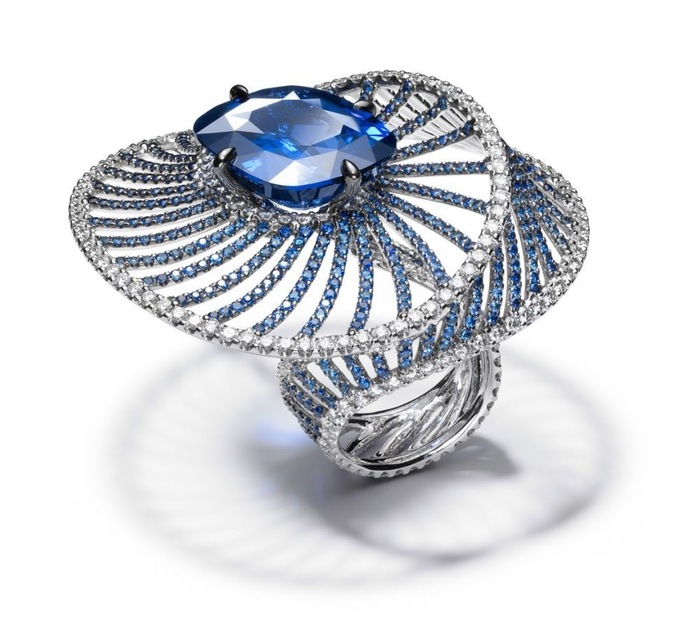
Harmony ring with a 25ct cushion-cut sapphire as the main stone
A
Turn down the volume, the sound is "accurate", which is to say really painful
PIXELS by Patrick Jean.
(via )
A
The house of Adler is one of the less well-known jewelry houses today. It was founded in the late 19th century in Istanbul, and moved its base of operations to Geneva in the 1970s. Their current collection is modern, but strongly classical in many ways. They tend to build, using multiple layers of repeated design or multiple strands in a necklaces, or multiple courses of stones.
Here are some samples of their current top-of-the-line collection, there will be another post later with more
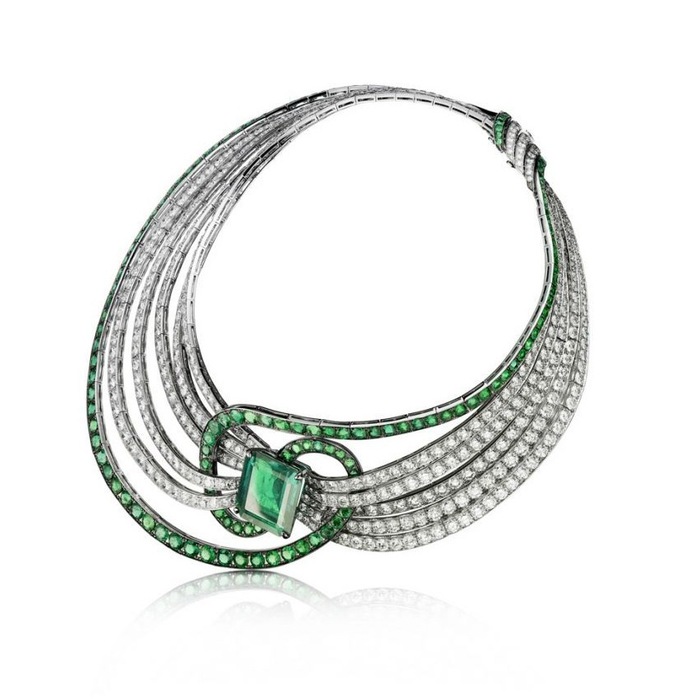 Clef de Sol necklace, 18kt white gold set with 35ct of Emeralds and 99ct of Diamonds surrounding a 30ct Colombian Emerald
Clef de Sol necklace, 18kt white gold set with 35ct of Emeralds and 99ct of Diamonds surrounding a 30ct Colombian Emerald
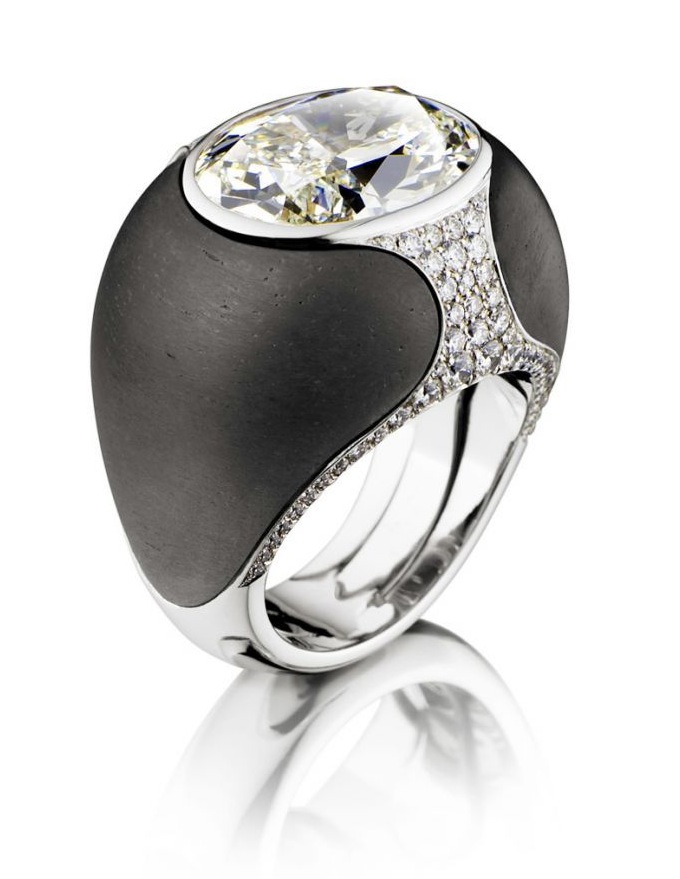 Precious Ebony ring, a 10ct oval diamond set in 18kt white gold flanked with two pieces of carved Ebony and about 1ct of other diamonds
Precious Ebony ring, a 10ct oval diamond set in 18kt white gold flanked with two pieces of carved Ebony and about 1ct of other diamonds
 Jodhpur earrings, pink gold set with 55ct white and brown diamonds in the dangles and two 5ct brown stones at the top
Jodhpur earrings, pink gold set with 55ct white and brown diamonds in the dangles and two 5ct brown stones at the top
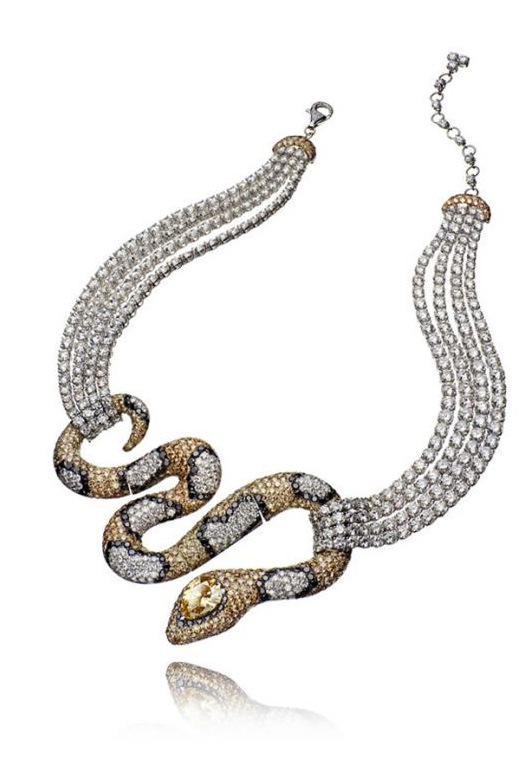
Amazonie necklace, 21ct of brown diamonds, 66ct of white and 11ct of black diamonds surround the 5ct pear-shaped brown diamond set in the snakes head. For an example of how large that piece really is, and what it looks like on a person, rather than a while background, this is that same necklace on Francesca Eastwood, Clint's daughter at a 2009 debutante ball
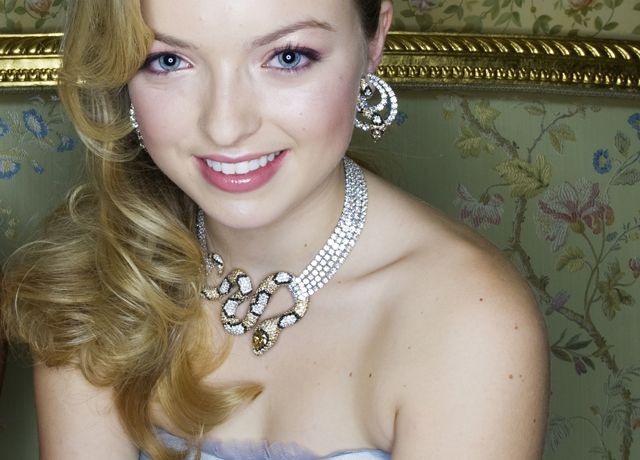
(picture from)
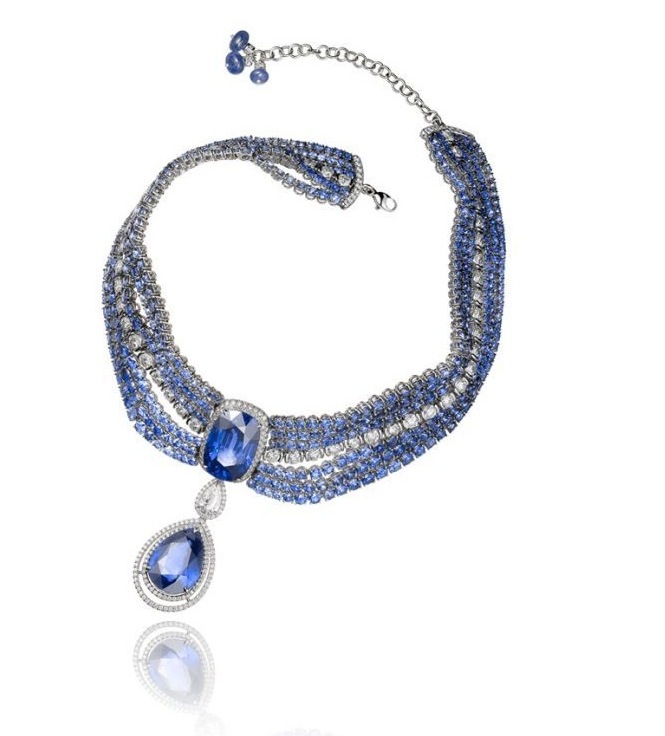
Blue Dreams necklace, set with diamonds and sapphires, the three primary stones are a 30ct cushion-cut Madagascar sapphire (upper) and a 25ct pear-shaped Sri Lanka sapphire (lower), with a pear-shaped diamond between
Except where noted, all pictures from Adler
A
Wright, J. Edward. The Early History of Heaven. New York: Oxford University Press. 2000
This book presents itself as a history of the Judeo-Christian view of Heaven, that is the space above the sky, whether inhabited by the souls of all the saved or just a mechanism of spheres, supporting the planets. It presents itself as spanning two worlds, "valuable for both the general audience and the specialist" (p. x), with the text aimed to be accessible to all, and the endnotes for a more scholarly sort.
The organization is chronological, beginning with Sumerian and Akkadian conceptions of a tripartite universe and the Egyptian view of the heavens. These provide a basis for the early Israelite universe, which is explained in detail. At this point one of the weaknesses of the book becomes evident, the illustrations. The bulk of the illustrations are drawings from other sources, frequently with partial captions (p. 93 for eg.). There is no unifying style and some of them, though topically accurate, are quite difficult to parse (p. 103).
Following Egypt and Mesopotamia, we enter early Israelite tradition, which is explained quite well. The reconstruction of early Israelite semi-monotheism provides a good introduction to what can be a difficult topic and the structure of the universe, and heaven in particular as a mirror of the earthly Temple is covered.
What follows is a short chapter on Greek, Roman, Persian and Ptolemaic Egyptian traditions, which are covered only in basics. There is an explanation of the various models of the universe, those of Pythagoras, Eudoxus and others, but not explanation of the bizarre elements many of these models possess: Pythagoras' "Counter-earth" or the numerous intervening spheres of later models.
Finally the author's focus is reached, later Jewish and early Christian views of Heaven. He provides some excellent examples from some of the more complex Apocryphal works beginning with those which stuck with a "single heaven" cosmology, and then those later works which adopted the Greco-Roman multiple-Heaven view. The texts are complex, but the explanations are quite well constructed, and make the concepts as clear as possible, given the oddities of some of the texts. It is in these texts that the concepts of human "souls" ascending into heaven post-mortem gains popularity, as well as the entrance requirements for those souls: good works, charity, and the most popular, orthodoxy beliefs that agree with the author.
In conclusion, I'd recommend the book. There are some weaknesses in the "general audience" accessability, including some passages in ancient Greek and some common scholarly techniques for transliteration, which the non-scholarly audience might not follow. That and the, previously mentioned, uneven quality of the illustrations would be the only major problems.
(I learned about the book from Alan Lenzi)
A
- St. John's Abby Collection - artifacts and documents gathered by the monks of St. John's in the last 150 years
- Ethiopian Manuscript Project - 400 years of Ethiopian manuscripts
- Hill Manuscript Museum and Library - a long-standing project to preserve and make accessible manuscripts, originally on microfilm
I was first attracted to the site because the Hill Museum has the ability to search for illustrated capitol letters by letter, and I was hoping to build a new banner:
(letters from a 13th C Homillary A and M)

(letters from a 13th C Latin "Vitae sanctorum" [a 16. Februarii usque ad 31. Martii].A and M)
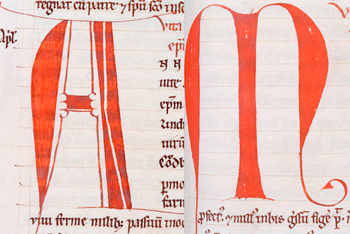
From another part of the world, both then and now, the Walters Art Museum has started digitizing it's Arabic manuscript collection. This example of Kufic is a tiny crop of the full-screen image available
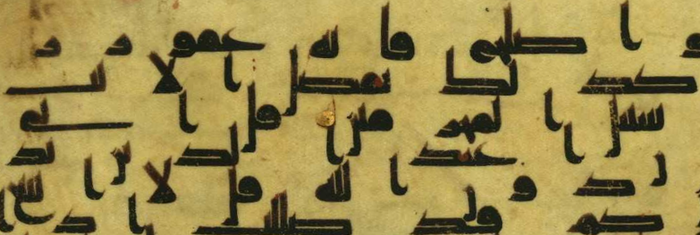
A
- A View on North Korea -- B. R. Myers on the internal views of North Koreans (~1 hour video)
- Fear of science will kill us -- How fear of science, as a framework for decisions, influences the current world
Now wasn't that cheery
A
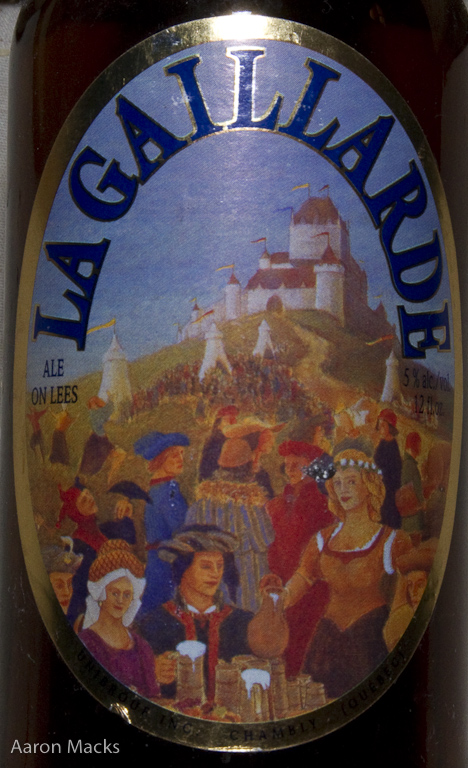
Deep in the dark recesses of a cupboard was a bottle of the long-discontinued La Gaillarde beer, by Unibroue. Sadly time was not kind to the bottle or it's contents, about 1/3 of the bottle seemed to have evaporated. Poured out it was flat, and darker than I remember. Taste was without alcohol and very strongly of honey, weirdly so, which I don't remember when it was new. It's time had apparently long since passed...alas
A
Sadly the image export function is broken on the Macintosh, but I was able to capture a sample of my work via screenshot and borrowed a sample of Peter's work from the gallery.
Mine

A
Famed Brazilian jeweler H.Stern has produced 5 rings, in partnership with Disney, inspired by the recent Alice in Wonderland film. All are in yellow gold with enamel and occasionally diamond accents.
Cheshire Cat, with a smile that glows in the dark
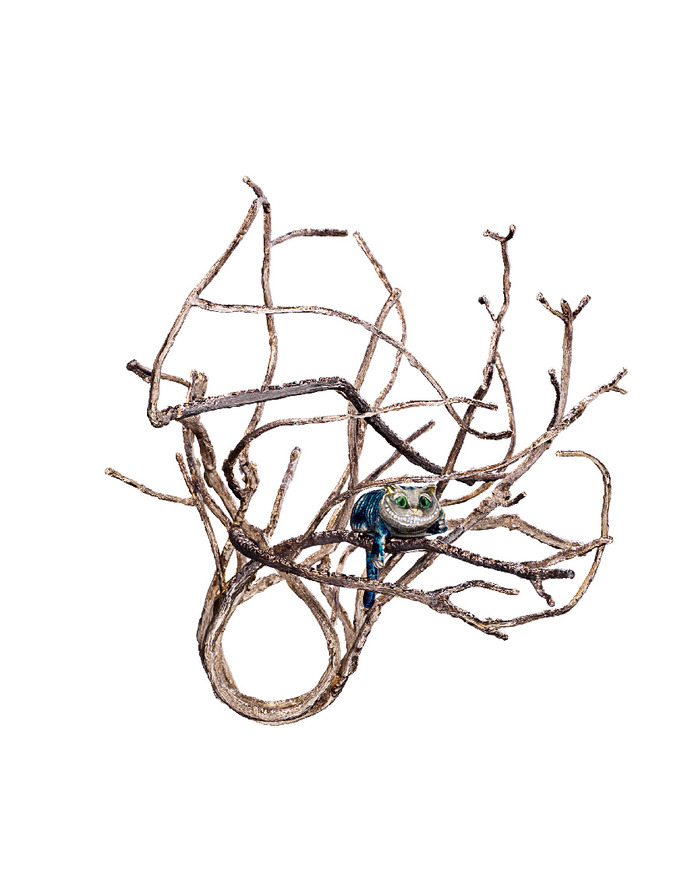
Topiary Tree, a tree shaped to look like bird in flight, constructed of individual leaves, soldered to a frame and then enameled
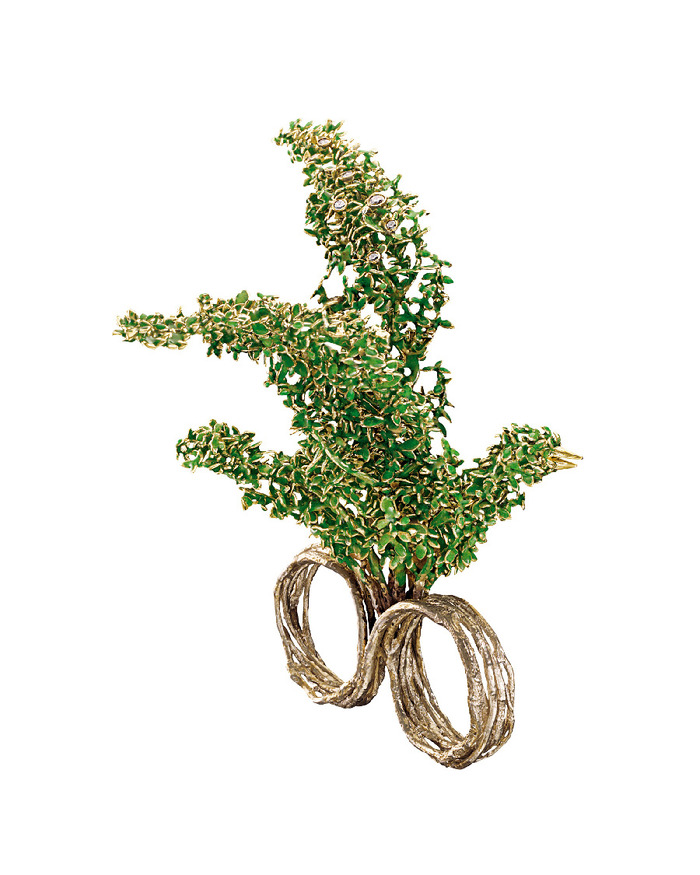
The fifth ring is the Jabberwocky, but I have yet to find a good picture of it.
(Pictures from )
A
As part of their 150th birthday, Chopard has release a animal-themed watch collection alongside the jewelry, previously mentioned; All three of these pieces are within the "Happy Diamonds" collection, so the small round diamonds on the dial are actually mobile, free to bounce around the face of the watch. All are quartz (sigh) movement, in 18kt gold cases with white diamonds set in the bezel. The dials are painted mother-of-pearl.
First is the penguin, set with white, black and yellow diamonds. The dial has the rest of his flock as a background.
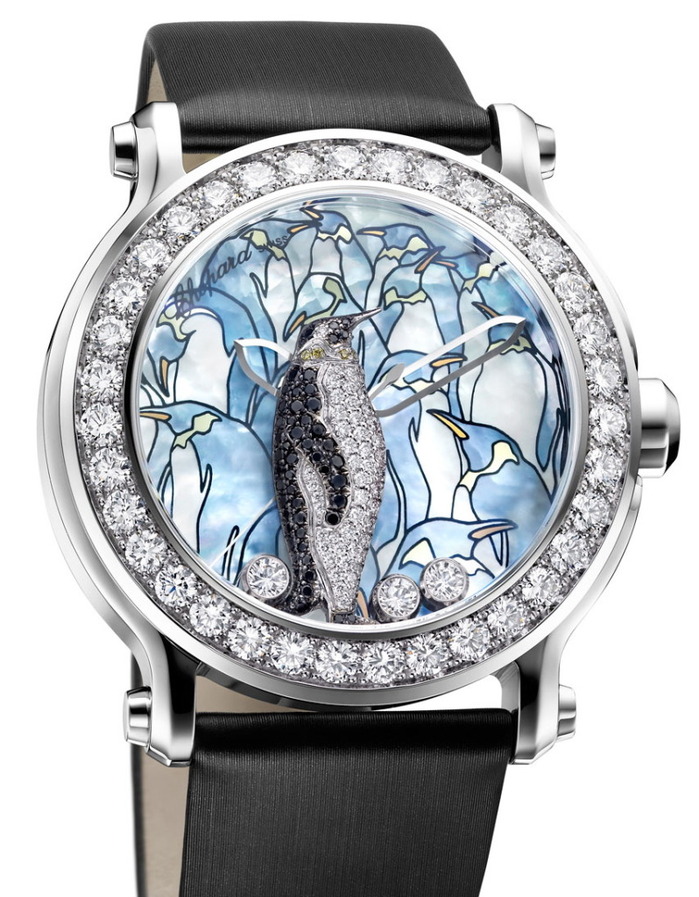
A polar bear follows, in white gold set entirely in white diamonds except for onyx eyes over a painted ice floe.
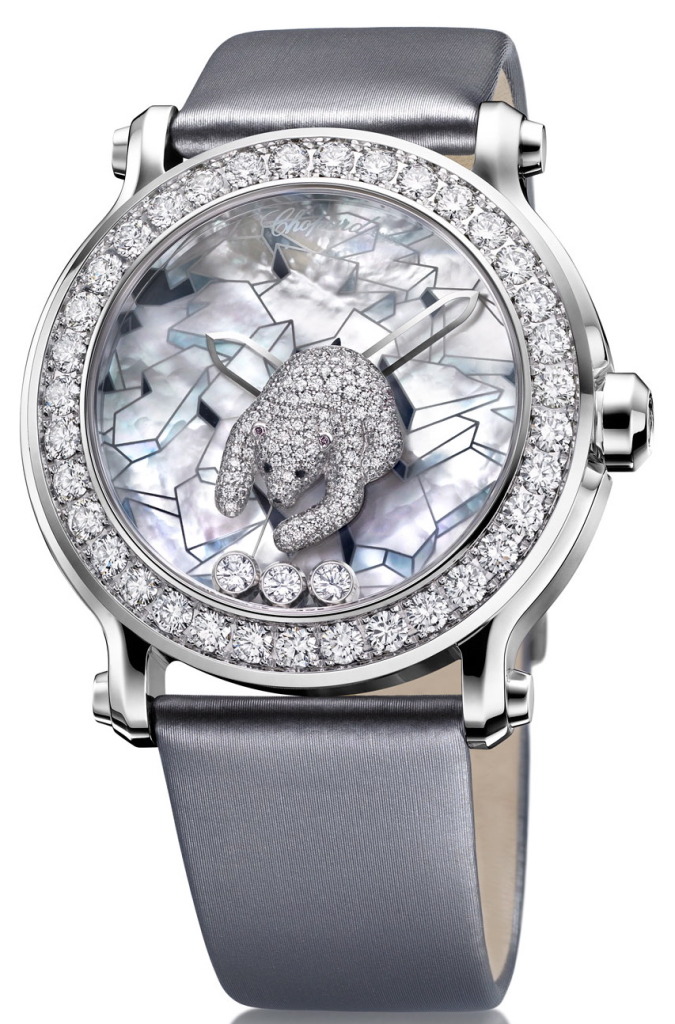
Finally a monkey, in white gold set with white diamonds, climbing on a yellow-diamond set branch passes a green leaf. In this one the branch and the monkey separate the three mobile diamonds, each cannot leave its allotted third.
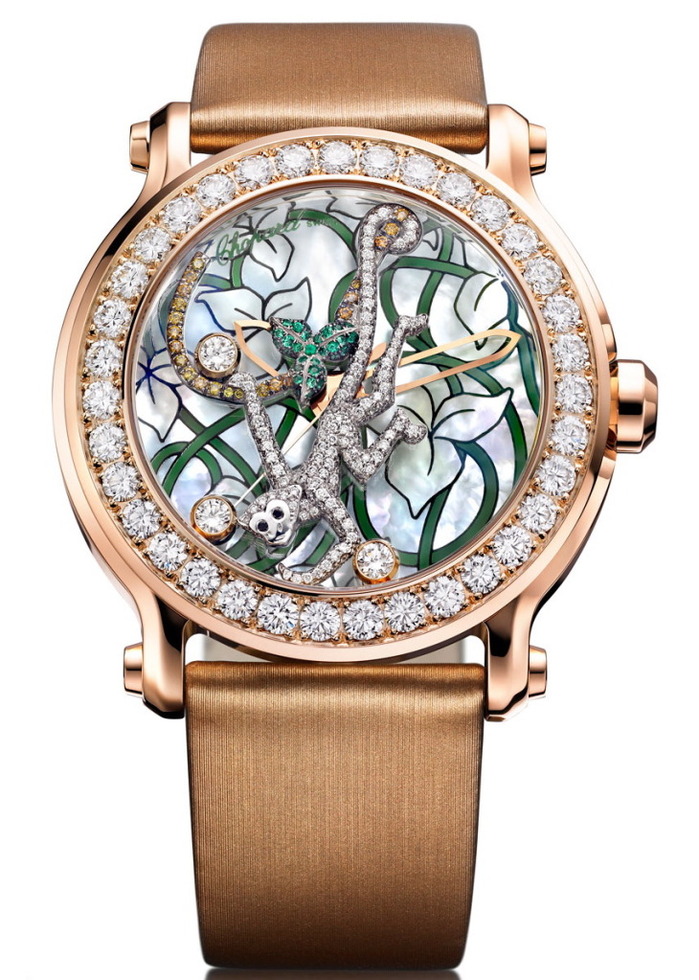 (All pics from TimeZone)
(All pics from TimeZone)
A
Chopard celebrates 150 years in the watch and jewelry industry with a collection of animal-themed pieces for both categories. First in the arena of jewelry
Turtle ring in rose gold, composed of a pear-cut yellow diamond surrounded by brown diamonds, cognac-colored diamonds and yellow diamonds
Antelope earrings in yellow gold set with brown diamonds, yellow diamonds and emeralds
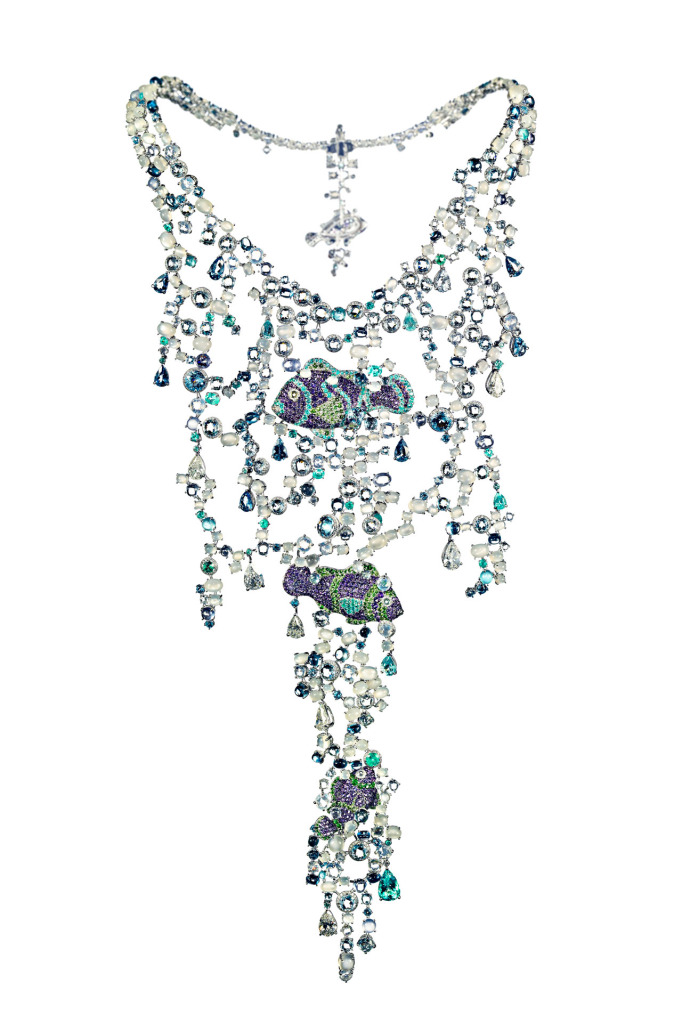
Clownfish plastron necklace in white gold set with 105 carats of moonstones, aquamarines, blue sapphires, pastel blue sapphires, blue topazes, icy quartz, Paraiba tourmalines, pear-cut diamonds, diamonds, amethysts, apatites, chalcedonies and tsavorites
Frog ring in white gold set with emeralds, black diamonds and white diamonds, holding a crown featuring a stunning brilliant-cut yellow diamond entirely surrounded by yellow diamonds
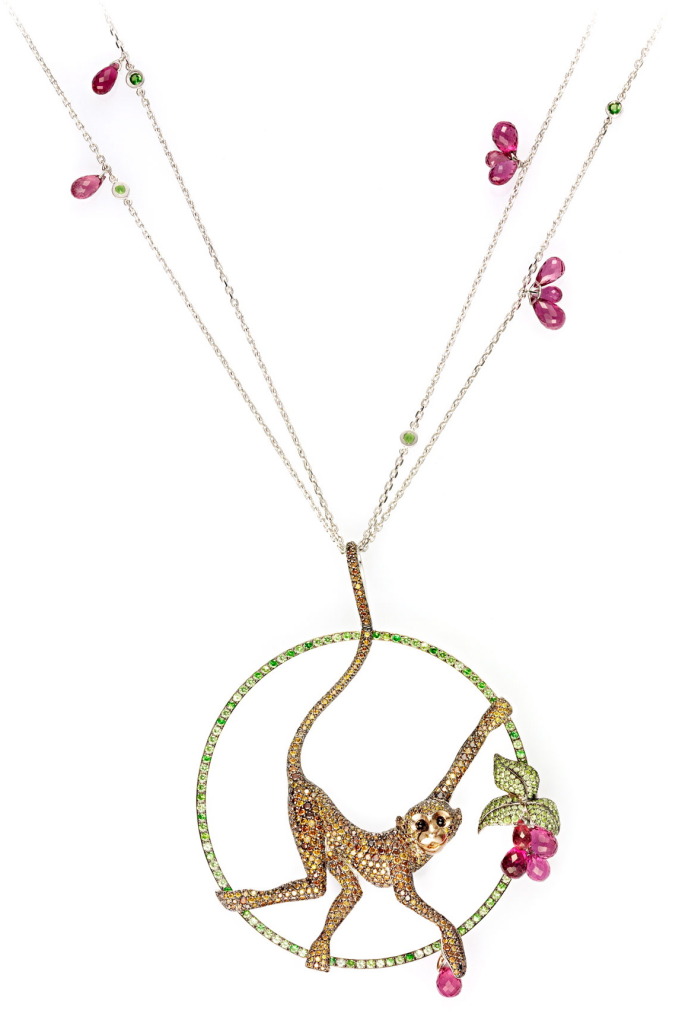
Monkey pendant in white gold set with brown diamonds and tsavorites, on a white gold chain set with briolette-cut rubellites
Stork earrings in white and red gold, set with two briolette-cut kunzites totalling 51 carats, as well as white, black and yellow diamonds
(Pictures from TimeZone)

Bear ring in white-gold, pave set with diamonds and set with sapphire eyes and a onyx nose.
Broach in the form of a bee, yellow and white gold set with black and yellow diamonds.

Seahorse earrings, diamonds set in white gold with onyx accents
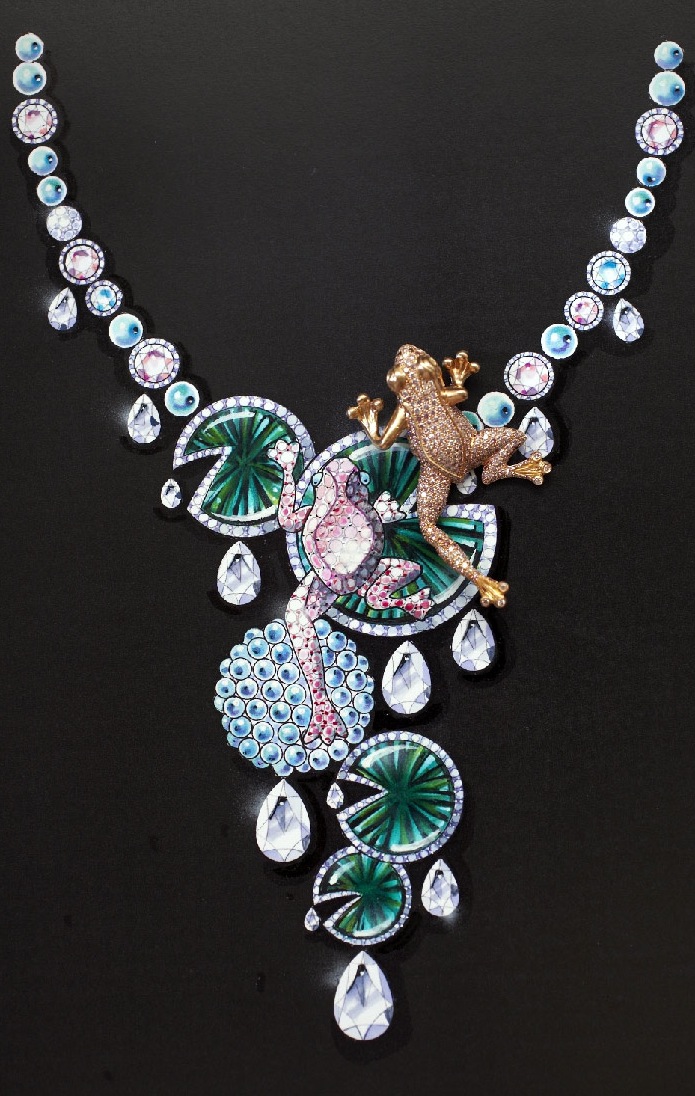
Drawing of a frog necklace
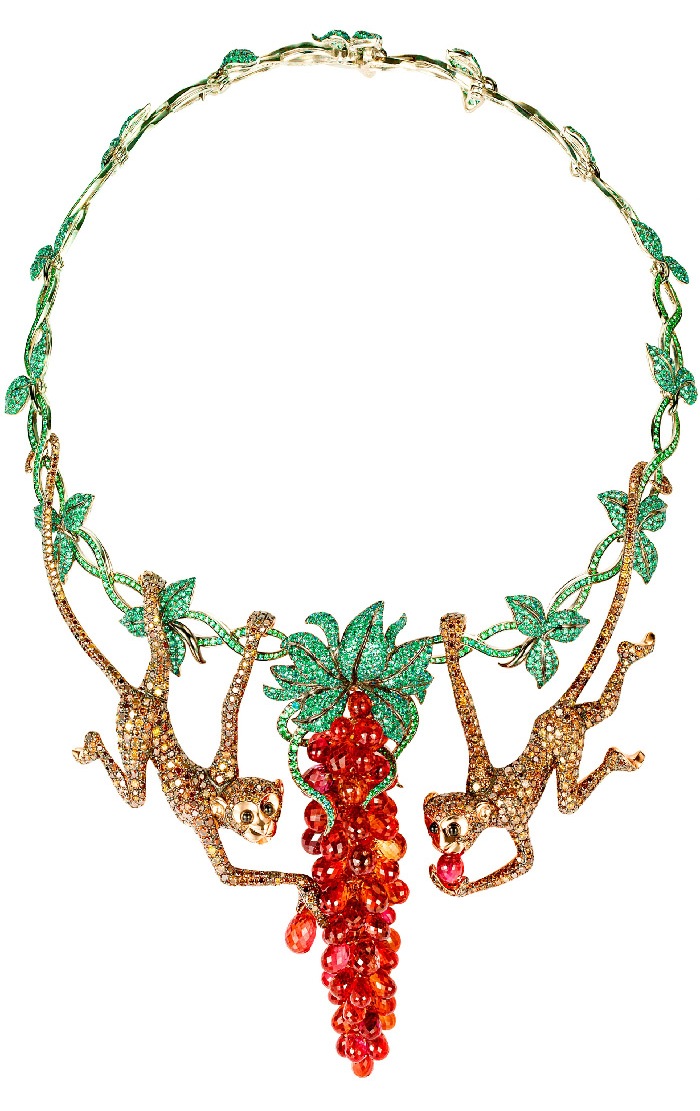
Necklace with a pair of monkeys in white and yellow gold, set with emeralds, sapphires, tsavorites, onyx and brown diamonds.
Cat ring, in white gold set with white, yellow, brown and black diamonds
(Pictures from Paris Joaillerie)
It looks like I'll hold off the watches until tomorrow, there's enough here already
A

For those ignorant of the lore of Charm City, that's Mr. Boh, of National Bohemian beer fame, proposing to the Utz Girl, hawker of Utz potato chips.
(picture from)
A


